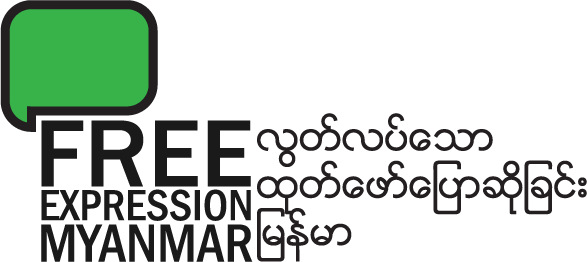Report: Freedom of the Net: Myanmar in 2019 — အင်တာနက်ပေါ်တွင် လွတ်လပ်မှု မြန်မာနိုင်ငံ
Click here to download Freedom of the Net Myanmar 2019 (3mb) >>
Key findings: Obstacles to Access
Internet access continues to improve in Myanmar, as more users connect via smartphones with fast 4G service. The success of two foreign-owned mobile service providers has placed pressure on the state’s monopoly, and the government has responded by giving a mobile phone license to a military-owned conglomerate and restoring the state’s majority control over the mobile market.
Key findings: Limits on Content
While the government continues to refrain from applying direct limitations on content, self-censorship on a range of subjects including the military, corruption, and the Rohingya, remains high. Social media companies have responded to pressure by opaquely increasing content removals, which has removed legitimate content. Users are free to access the internet, but there is a lack of diversity in the ownership and content of online media outlets. Meanwhile, the government and military actively promote their own narratives online and reject much independent reporting as “fake news.”
Key findings: Violations of User Rights
Criminalisation of internet users persisted, including under several criminal defamation laws, while the government has hinted that a draft cybersecurity law could contain provisions punishing online criticism of the government. Intimidation of users remains common, through online surveillance carried out by the government and military, as well as harassment against those reporting on or discussing conflicts in Rakhine, Shan, and Kachin states online, in addition to users discussing gender and other so-called “sensitive” issues.
Further information
It includes updates on the following questions:
- Do infrastructural limitations restrict access to the internet or the speed and quality of internet connections?
- Is access to the internet prohibitively expensive or beyond the reach of certain segments of the population for geographical, social, or other reasons?
- Does the government exercise technical or legal control over internet infrastructure for the purposes of restricting connectivity?
- Are there legal, regulatory, or economic obstacles that restrict the diversity of service providers?
- Do national regulatory bodies that oversee service providers and digital technology fail to operate in a free, fair, and independent manner?
- Does the state block or filter, or compel service providers to block or filter, internet content?
- Do state or nonstate actors employ legal, administrative, or other means to force publishers, content hosts, or digital platforms to delete content?
- Do restrictions on the internet and digital content lack transparency, proportionality to the stated aims, or an independent appeals process?
- Do online journalists, commentators, and ordinary users practice self-censorship?
- Are online sources of information controlled or manipulated by the government or other powerful actors to advance a particular political interest?
- Are there economic or regulatory constraints that negatively affect users’ ability to publish content online?
- Does the online information landscape lack diversity?
- Do conditions impede users’ ability to mobilize, form communities, and campaign, particularly on political and social issues?
- Do the constitution or other laws fail to protect rights such as freedom of expression, access to information, and press freedom, including on the internet, and are they enforced by a judiciary that lacks independence?
- Are there laws that assign criminal penalties or civil liability for online activities?
- Are individuals penalized for online activities?
- Does the government place restrictions on anonymous communication or encryption?
- Does state surveillance of internet activities infringe on users’ right to privacy?
- Are service providers and other technology companies required to aid the government in monitoring the communications of their users?
- Are individuals subject to extralegal intimidation or physical violence by state authorities or any other actor in retribution for their online activities?
- Are websites, governmental and private entities, service providers, or individual users subject to widespread hacking and other forms of cyberattack?
Click here to download Freedom of the Net Myanmar 2019 (Myanmar language, 3mb) >>
A) လက်လှမ်းမှီမှုအပေါ် အတားအဆီးများ
မြန်ဆန်သော 4G ဝန်ဆောင်မှုပါသည့် စမတ်ဖုန်းများမှတဆင့် သုံးစွဲသူများ ပို၍ အင်တာနက် ချိတ်ဆက်လာသောကြောင့် မြန်မာနိုင်ငံတွင် အင်တာနက် လက်လှမ်းမှီမှု ဆက်လက်တိုးတက်လာသည်။ ၁၀ / ၂၅ မှတ်
B) အကြောင်းအရာများကို ကန့်သတ်မှု
အစိုးရသည် အကြောင်းအရာအပေါ် တိုက်ရိုက် ကန့်သတ်ခြင်းများမှ ဆက်လက် ရှောင်ကြဉ်သော်လည်း စစ်တပ်၊ အဂတိလိုက်စားမှုနှင့် ရိုဟင်ဂျာအကြောင်း အစရှိသော ခေါင်းစဉ်များအပါအဝင် အကြောင်းအမျိုးမျိုးတို့အပေါ် မိမိကိုယ်ကို ဆင်ဆာဖြတ်တောက်မှုမှာ မြင့်မားနေဆဲ ဖြစ်သည်။ လူမှုမီဒီယာကုမ္ပဏီများသည် ပွင့်လင်းမြင်သာမှုမရှိပဲ အကြောင်းအရာ ဖြုတ်ချဖယ်ရှားမှုအား တိုးမြင့်ခြင်းဖြင့် ဖိအားပေးမှုများအပေါ် တုန့်ပြန်ခဲ့ရာ တရားဝင်နည်း လမ်းကျသော အကြောင်းအရာများကိုပါ ဖျက်ခဲ့သည်။ ၁၆ / ၃၅ မှတ်
C) အသုံးပြုသူ အခွင့်အရေး ချိုးဖောက်မှုများ
အင်တာနက်အသုံးပြုသူများကို အသရေဖျက်မှု အပါအဝင် ရာဇဝတ်ပြစ်မှုကြောင်းဆိုင်ရာဥပဒေအမျိုးမျိုးဖြင့် ရာဇ၀တ် ပြစ်ဒဏ်များချမှတ်နေဆဲ ဖြစ်သည်။ တစ်ချိန်တည်းတွင်ပင် ဆိုက်ဘာလုံခြုံရေး ဥပဒေမူကြမ်းတွင် အစိုးရအား အွန်လိုင်းပေါ်တွင် ဝေဖန်မှုကို အပြစ်ပေးနိုင်သော ပြဋ္ဌာန်းချက်များ ပါဝင်နိုင်သည်ဟု အစိုးရမှ အရိပ်အမြွက်ပေးခဲ့သည်။ အစိုးရနှင့် စစ်တပ်မှ ပြုလုပ်သော အွန်လိုင်းပေါ်ရှိ နောက်ယောင်ခံစောင့်ကြည့်ခြင်းမှတဆင့် အွန်လိုင်းအသုံးပြုသူများကို ခြိမ်းခြောက်မှုသည် အဖြစ်များသည်။ ထို့အပြင် ကျား၊မရေးရာနှင့် "ထိလွယ်ရှလွယ်" ကိစ္စများဟု ခေါ်ကြသော အကြောင်းများကို ဆွေးနွေးသော အသုံးပြုသူများအား နှောင့်ယှက်ခြင်းအပြင် ရခိုင်၊ ရှမ်းနှင့် ကချင်ပြည်နယ်များရှိ ပဋိပက္ခများအကြောင်းကို အွန်လိုင်းပေါ်တွင် သတင်းတင်ဆက်နေသူများအား နှောင့်ယှက်မှုများသည်လည်း အဖြစ်များသည်။ ၁၀ / ၄၀ မှတ်

 Download the Freedom of the Net Myanmar 2019 (3mb) >>
Download the Freedom of the Net Myanmar 2019 (3mb) >>